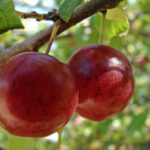There is no time like the present to start thinking about planting blueberry bushes. Once blueberry bushes are established, you will have many seasons of beautiful, healthy, nutritious crops to harvest. Lets discuss selecting a site, planting blueberry bushes, care, pruning, and pests and diseases of blueberry bushes.
Selecting a Site for Planting Blueberry Bushes
Look for a sunny location for planting blueberry bushes. Provide plenty of sunshine rather than shade. However, blueberry production is going to suffer if they are planted in too much shade. Provide space between other plants or trees that will compete for nutrients or water. The best time for planting blueberry bushes is in the springtime.
Planting blueberry bushes should be done in a loose, sandy, fertile soil. This includes organic compost, well-aerated soil, humus-rich soil, good drainage and the bed should retain moisture as well. Blueberries will thrive in soil acidity with pH readings up to 4.5. An ideal range would be 4.0. If necessary use sulphur to bring down pH levels when planting blueberry bushes.
Planting Blueberry Bushes
Use self-pollinating blueberries or plant two of the same variety to assure pollination. Planting blueberry bushes should be done after the danger of frost is past in the spring. Whether you plant in a hole or a trench, use plenty of peat moss ensuring strong organic content maintaining soil acidity.
Lowbush varieties can be planted one to about three feet apart. Rows need to be separated by about 4 feet. Rabbiteye, half-high and highbush should be planted five or six feet from each other. Rows should be ten to eight feet a part. The depth of the hole or row should be about four to three inches deeper than that of the root ball when planting blueberry bushes. Tightly pack the soil around each root ball. To encourage development of runners cover the top of each stem with soil one third of the way up.
Caring for Blueberry Bushes
After planting blueberry bushes cover the soil surface with shredded bark, sawdust or wood chips as a mulch to preserve moisture and maintain soil acidity. Rainwater is the best method for watering to regulate the pH. Blueberry bushes require a minimum watering depth of one inch per week if rainwater is not available.
It is best to fertilize blueberry bushes with cottonseed or soybean meal and refrain from using concentrated fertilizers that can burn the roots. Acid-loving plant fertilizers are recommended for blueberries. When the first blooming cycle begins remove blossoms to encourage root development and strengthen the blueberry bushes.
Pruning Blueberry Bushes
After harvesting, remove diseased and dead stems and branches. Thin out a couple of stalks from the bushiest portions of each blueberry bush. Trim back a little bit of the height as well, but never remove more than about half of the most recent growth.
Pests and Diseases of Blueberry Bushes
Use chicken wire fencing to protect tender young shoots from rodents and rabbits. Bird netting can protect blueberry plants from birds and insects are not usually a problem with blueberry bushes. If blueberries fall off or birds are eating them, then they are ripe and ready for picking.
Sources:
http://www.ehow.com/how_2059570_plant-blueberries-backyard-garden.html
http://www.gardening-guides.com/pdf-library/how-to-grow-blueberries.pdf







